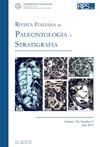BENTHIC FORAMINIFERA AS POLLUTION INDICES IN THE MARINE ENVIRONMENT OF WEST COAST OF INDIA
IF 1.6
3区 地球科学
Q2 GEOLOGY
引用次数: 53
Abstract
Two ecosystems affected by acidic pollutants (Thana Creek, Bombay and inshore area of Trivandrum, Kerala) and two other ecosystems affected by alkaline pollutants (Cola Bay, Goa and inshore area of Karwar, Karnataka) were studied for pollution effects monitoring through Foraminifera. In the Thana Creek area, Bombay, the magnitude of corrosive effect, lower—than—normal ornamentation, deepening of grooves and sutural thickenings, enlargement of pores, widening of apertures in Foraminifera were taken as indices of pollution effect. In the, Cola bay area, Goa, the environment becomes hypertrophic resulting in large—sized, robust, mostly megalospheric forms of Ammonia. Elphidium and Florilus scaphum are recorded at the proximal zone near the discharge point; miliolids in the transitional zone and dominantly smaller—sized Nonionella, Fursenkoina pontoni, Bulimina marginata at the distal zone quite far from thc discharge point where pollutants are diluted and dissipated. In the Karwär area, Karnataka, pollutant causes reduced diversity with a decrease in foraminiferal population. Moreover, there is a reduction in size followed by test wall thinning in Nonion and Ammonia, increase of agglutinated forms near shore, and dispersal and dilution of the pollutants resulting in foraminiferal abundance. In the Trivandrum area, Kerala, the effluent effect presents morphological anomalies (Operculina, Cibicides), erosion along peripheries, induced growth in last few chambers, inferred dissolution and consequent destruction of small, thin—walled forms suggested by their absence, thus leaving only the larger ones in the entire area. Living/dead ratio is negatively oriented at all sites.底栖有孔虫作为印度西海岸海洋环境的污染指数
通过有孔虫对两个受酸性污染物影响的生态系统(孟买塔纳溪和喀拉拉邦特里凡得琅近岸区域)和另外两个受碱性污染物影响的生态系统(果阿科拉湾和卡纳塔克邦卡尔瓦近岸区域)进行了污染影响监测研究。在孟买的塔纳溪地区,有孔虫的腐蚀效应程度、装饰性低于正常水平、沟槽加深和缝合线变粗、孔隙增大、孔径变宽被作为污染效应的指数。在果阿的可乐海湾地区,环境变得肥沃,产生了大型、健壮的有孔虫,主要是巨型有孔虫。在靠近排放点的近端区域记录到 Elphidium 和 Florilus scaphum,在过渡区域记录到 miliolids,在离排放点相当远的远端区域记录到体积较小的 Nonionella、Fursenkoina pontoni 和 Bulimina marginata,污染物在这里被稀释和消散。在卡纳塔克邦的 Karwär 地区,污染物导致有孔虫数量减少,多样性降低。此外,在壬离子和氨水中,有孔虫的体积减小,随后试壁变薄,近岸凝集形态增加,污染物的扩散和稀释导致有孔虫数量增加。在喀拉拉邦的特里凡得琅地区,污水的影响表现为形态异常(Operculina、Cibicides)、外围侵蚀、最后几个腔室的诱导生长、推断溶解以及由此导致的小型薄壁形式的破坏,这表明它们已经消失,因此整个地区只剩下较大的薄壁形式。所有地点的生/死比例均为负向。
本文章由计算机程序翻译,如有差异,请以英文原文为准。
求助全文
约1分钟内获得全文
求助全文
来源期刊
CiteScore
3.60
自引率
4.30%
发文量
28
审稿时长
>12 weeks
期刊介绍:
The Rivista Italiana di Paleontologia e Stratigrafia was founded in 1895. It publishes original papers dealing with all fields of paleontology and of stratigraphy, from Italy and the Mediterranean to the Tethys, as well across the globe from China to North America.

 求助内容:
求助内容: 应助结果提醒方式:
应助结果提醒方式:


